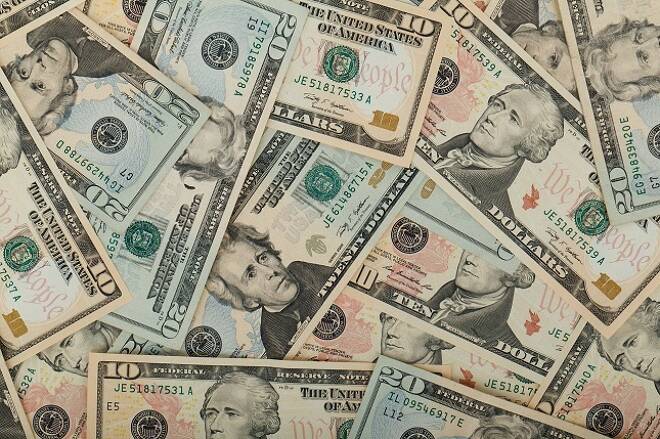Advertisement
Advertisement
Dollar Boosted by Robust Inflation Reports, Pressured by Consumer Confidence Weakness
By:
There were no other major releases last week so the price action in the Australian Dollar, New Zealand Dollar and Japanese Yen was primarily influenced by the U.S. producer and consumer inflation data as well as the consumer confidence report. Traders reacted to these reports because they could help influence the Fed’s interest rate decisions later this year.
After starting out weak, the U.S. Dollar rebounded against a basket of currencies to close higher on Monday then subsequently followed through with three more consecutive higher closes before closing lower on Friday. Nonetheless, the Greenback still managed to finish on the plus side for the week.
September U.S. Dollar Index futures settled higher last week at 94.500, up 0.731 or 0.78%.
The U.S. Dollar recovered from a 3-1/2 week low on July 9 as the British Pound plunged following the announcement that U.K. Foreign Secretary Boris Johnson resigned from the government. Johnson quit in protest over Prime Minister Theresa May’s plans to leave the European Union. His was the second resignation in a day, leaving the British leader’s Brexit plans in tatters. Just hours before Johnson’s resignation, May’s Brexit minister, David Davis, did the same over her EU plans.
The dollar continued to strengthen on July 10 as investors set aside trade tension fears. Earlier in the session, the Trump administration raised the stakes in their trade dispute, threatening 10 percent tariffs on $200 billion of Chinese goods.
Buyers continued to drive the dollar higher on July 11 after expectation-beating inflation data drove up demand for the higher-yielding currency. The catalyst for the move was the Producer Price Index report which rose in June amid gains in the cost of services and motor vehicles, leading to the biggest annual increase in 6-1/2 years.
The dollar was further boosted by better-than-expected U.S. consumer inflation on July 12. On Thursday, consumer prices rose in June at the highest yearly rate since 2012, reflecting a U.S. economy that’s running hotter than any time since the Great Recession.
In June, the consumer price index increased 0.1%. The monthly increase in the cost of living rose to a 12-month pace of 2.9% from 2.8%, marking the highest level in more than six years, the government said. A year ago, the 12-month rate stood at just 1.6%.
Core CPI advanced 0.2% last month. The yearly increase in the core rate edged up to a more modest 2.3%, the highest benchmark in a year and a half.
The rally came to an end on Friday when the dollar index reversed from an early session high to close lower after a report showed an unexpected decline in consumer sentiment.
While the PPI and CPI data may have helped underpin the Greenback earlier in the week, Friday’s drop in consumer sentiment pushed yields lower.
According to a report from the University of Michigan, consumer sentiment hit a six-month low, but held near the average print for the prior 12 months. The move was fueled in part by rising fears surrounding a trade war between the United States and its economic partners. Consumer sentiment fell to 97.1, below an estimated 98.2.
Other Currencies
There were no other major releases last week so the price action in the Australian Dollar, New Zealand Dollar and Japanese Yen was primarily influenced by the U.S. producer and consumer inflation data as well as the consumer confidence report. Traders reacted to these reports because they could help influence the Fed’s interest rate decisions later this year.
About the Author
James Hyerczykauthor
James Hyerczyk is a U.S. based seasoned technical analyst and educator with over 40 years of experience in market analysis and trading, specializing in chart patterns and price movement. He is the author of two books on technical analysis and has a background in both futures and stock markets.
Advertisement
